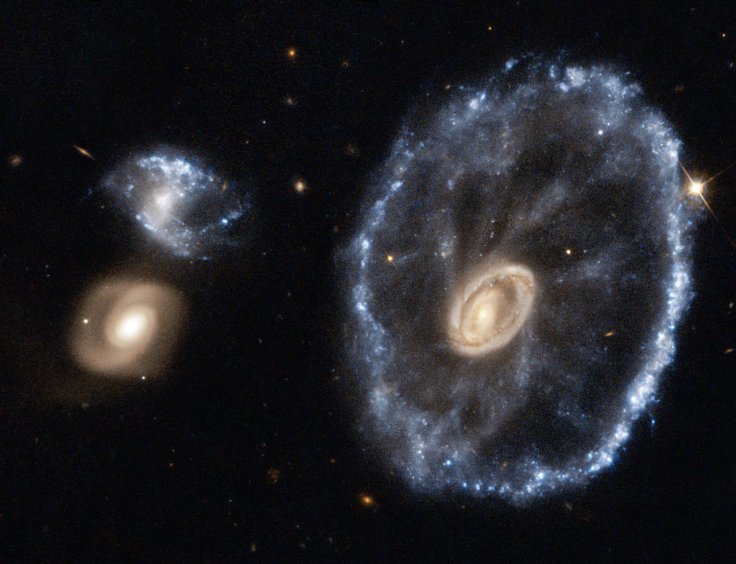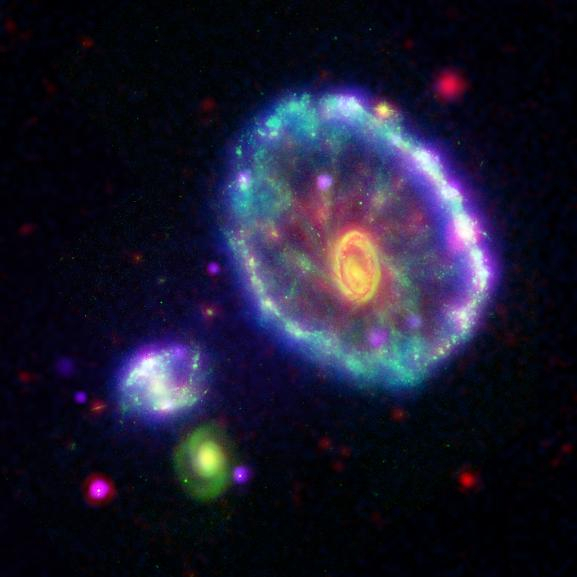
NASA and European Space Agency's Hubble Space Telescope has captured the above astonishing picture of the cartwheel shaped galaxy.
The cartwheel galaxy in the image lies about 500 million light-years away from Earth in the constellation of Sculptor. It has been shaped by a violent galactic collision.
The galactic collision occurred when a smaller galaxy passed through a large disc galaxy to produce shock waves that swept up gas and dust to form ripples. A region visible in blue color in the rippled ring is indeed peculiar for its intense star formation.
The outermost ring of the galaxy advances as much as 1.5 times the size of our Milky Way galaxy. It could be marked as the shock wave's leading edge. The recently released image is a reprocessed version of earlier Hubble data.
The galaxy was first spotted using the wide-field images from the UK Schmidt telescope. It was later studied using Anglo-Australian Telescope, Hubble Space Telescope, Chandra X-ray Observatory, Spitzer Space Telescopes and the Galaxy Evolution Explorer.

Different observatories have captured images of the cartwheel galaxy in different spectrum colors. Galaxy Evolution Explorer's far-ultraviolet detector captured blue light images while Hubble observed B-band visible light in green color.
The Spitzer Space Telescope camera captured images less than 8 microns in red color. Chandra images showed purple colored band using its advanced CCD imaging spectrometer- S array instrument.
Hubble Space Telescope has recently calculated the mass of an enormous galaxy cluster in the distant Universe to be equivalent to three million billion suns. The galaxy cluster officially known as ACT-CLJ0102-4915, and nicknamed "El Gordo" ("the Fat One" in Spanish) is the largest, hottest, and brightest X-ray galaxy cluster ever discovered in the distant Universe.









